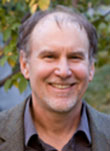Hirschl research finds many join 1 percent, but few stay for long
By John Carberry and Ellen Leventry

Here’s some good news for the New Year: According to new research by Tom Hirschl, professor of development sociology at Cornell University, and Mark Rank of Washington University in St. Louis, there’s a 1-in-9 chance that a typical American will hit the jackpot and join the wealthiest 1 percent for at least one year in her or his working life.
And now the bad news: That same research says only an elite few get to stay in that economic stratosphere – and nonwhite workers remain among those who face far longer odds.
“Rather than static groups that experience continual high levels of economic attainment, there would appear to be more movement into and out of these income levels,” the authors write in their PLOS One paper “The Life Course Dynamics of Affluence” published today. “Education, marriage and race are among the strongest predictors of top-level income, and in particular the race effect suggests persistent patterns of social inequality.”
Building upon the research presented in their recent book “Chasing the American Dream,” which analyzed social mobility at the lower end of America’s economic spectrum, the latest research from Hirschl and Rank uses a new “life course” methodology to examine social mobility at the top levels of income distribution. Relying on data collected regularly since 1968 as part of the University of Michigan’s Panel Study of Income Dynamics, this life-course approach analyzed thousands of people from age 25 to 60, and examined long stretches of their work lives to track economic movement. This large-scale, long-term observation provided some surprising results:
- By age 60, almost 70 percent of the working population will experience at least one year in the top 20 percent of income earners.
- More than half (53 percent) will have at least one year among the top 10 percent.
- Slightly more than 11 percent will spend at least one year as members of the top 1 percent.
While Hirschl and Rank found substantial fluidity among the ranks of America’s wealthiest, they also noticed that very few get to stay among the ranks of the super rich for very long. While 70 percent of the working population may hit the top 20 percent of earners, barely 20 percent will stay for 10 consecutive years or more. At the very top, while one in nine Americans may at some time in their careers be among the top 1 percent, fewer than one in 160 (0.6 percent) will stay for a decade or more.
“Attaining 10 consecutive years at the top is rare, and reflects the idea that only a few persist at this elite level,” the authors write.
The researchers note that the generally high level of turnover among the top ranks of earners can work to buffer economic inequality. They also found this higher-than-expected fluidity to be a double-edged sword: While it demonstrates relatively widespread opportunity for top-level income, it also creates a very real insecurity among those who reach those heights.
Lastly, Hirschl and Rank uncovered another “contentious social implication” in their research. When looking at demographic patterns among the people whose data was analyzed, being educated, being married and being white were among the strongest predictors of reaching the economic peak.
“It would be misguided to presume that top-level income attainment is solely a function of hard work, diligence and equality of opportunity,” they write. “A more nuanced interpretation includes the proposition that access to top-level income is influenced by historic patterns of race and class inequality.”
John Carberry is managing editor for the College of Agriculture and Life Sciences (CALS). Ellen Leventry is director of media relations and special projects officer in CALS Communications.
Media Contact
Get Cornell news delivered right to your inbox.
Subscribe